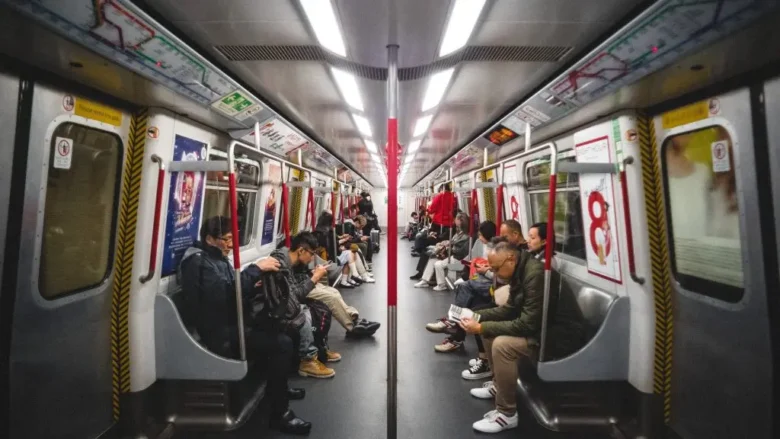Traveling to an unfamiliar country is an exciting adventure, and public transportation can sometimes be the most affordable and efficient way to get around. However, taking the subway, bus, and train in unfamiliar places can be a bit daunting, especially when safety is a major concern. Regardless of your level of experience, it’s important to know how to travel safely on public transportation abroad. From avoiding pickpockets to understanding local etiquette, follow these tips and you’ll be able to travel with peace of mind. By following these rules, you’ll no longer have to worry about potential hazards and can focus on enjoying your trip. Let’s take a look at six important safety guidelines to make your trip stress-free.
Research the Public Transport System Before You Go:
Researching public transportation systems in advance is one of the best ways to ensure you have a safe experience traveling on public transportation abroad. To avoid misunderstandings, it’s important to familiarize yourself with routes, schedules, and payment options. Many places have official public transport websites or apps with real-time updates, which can be very useful. Knowing the routes to popular tourist attractions and their opening hours can help you avoid getting stuck. Find out if there are any common scams or dangerous places to avoid. Being prepared can reduce stress and reduce the chance of making mistakes that could put your safety at risk.
Make Sure You Keep Your Belongings Safe:
Pickpockets are a common problem on crowded buses, trains, and metro stations, especially in places with lots of tourists. Protect your belongings with an anti-theft bag, carry a zip-up crossbody bag, or keep your phone and wallet in your front pocket. Valuables like jewelry or cameras should not be visible, as they can make you a target. If possible, carry your backpack in front of you and be alert in busy places. It’s best to only take what you need for the day and keep any valuables or cash in your accommodation. A little vigilance can go a long way to reducing theft.
Be Aware of Your Surroundings:
Always be aware of your surroundings when traveling on public transport abroad. Avoid distractions such as staring at your phone for too long, as this can make you a prime target for thieves. Pay attention to how locals behave; if they avoid certain places or times, follow your instincts and wait for the next train or change to another carriage if you feel threatened. Try to sit close to the driver at night or in well-lit and busy places. Being aware of your surroundings will help you react quickly to any threats.
Learn a Few Simple Local Expressions:
When traveling on public transport abroad, it can be very useful to know a few common phrases in the local language. Using simple words such as “stop,” “ticket,” “help,” or “how much?” can help you communicate better. If you need help or are lost, politely asking for directions can get you help more quickly. Even if your pronunciation is not perfect, locals often appreciate your efforts. Also, pay attention to announcements or signs to avoid missing a stop or getting on the wrong bus. Making an effort to learn the local language can greatly enhance your travel experience.
Follow Local Traditions and Etiquette:
Follow public transport etiquette, which is unique to each country, so that you can adapt and stay safe. In some places, eating and drinking on the bus is perfectly normal, but in others it is not allowed. Look for any seats that are reserved for people with disabilities or the elderly and follow these rules. In some cultures, playing music or talking loudly can be considered rude. Respecting the local community and avoiding unwanted attention are two benefits of adhering to local customs. This not only keeps you safe but also enhances your travel experience.
Have a Contingency Plan:
Even with all the preparation, things can go wrong; unexpected route changes, strikes, or delays can throw your plans into disarray. Always have a backup plan, such as changing routes, contacting a reliable taxi company, or using a taxi app. To avoid running out of battery, write down important addresses (such as hotels or embassies) on paper or in your phone. If you’re heading home late at night, check for night buses or trains, or plan a safe route in advance. By being adaptable, you’ll never get stuck.
Conclusion:
While traveling abroad, using public transportation is a great way to explore a new place like a local, but safety should always come first. You can avoid common pitfalls by being aware of your surroundings, protecting your belongings, and familiarizing yourself with public transportation. You’ll find it easier to find your way around if you know some basic terminology and respect local customs. A backup plan also ensures that you are prepared for the unexpected. Following these six safety measures will help you travel with peace of mind. There is no need to feel intimidated by public transport; just be careful and sensible while enjoying your trip.
FAQs:
1. Is it safe for solo travelers to travel abroad on public transport?
Yes, public transport is generally safe for solo travelers as long as you stay alert, avoid dangerous places, and take some simple safety precautions, such as hiding valuables.
2. How do you avoid being pickpocketed on a crowded train or bus?
Keep your belongings in your front pocket, use anti-theft bags, and be aware of your surroundings. Don’t leave valuables on display in crowded places.
3. What should you do if you get lost on a new public transport system?
Stay calm, use a map or transport app, and ask locals or government officials for help. Learning a few simple phrases in the local language can also help.
4. Is it safe to travel by train or bus at night?
Depending on the city, do your homework in advance, sit close to the driver or in a well-lit area, and consider taking other transportation if you feel uncomfortable.
5. How do you know if you are behaving appropriately on public transportation?
Pay attention to how locals behave; blend in and be polite, avoid making loud noises, respect the seating arrangements, and follow all instructions.




